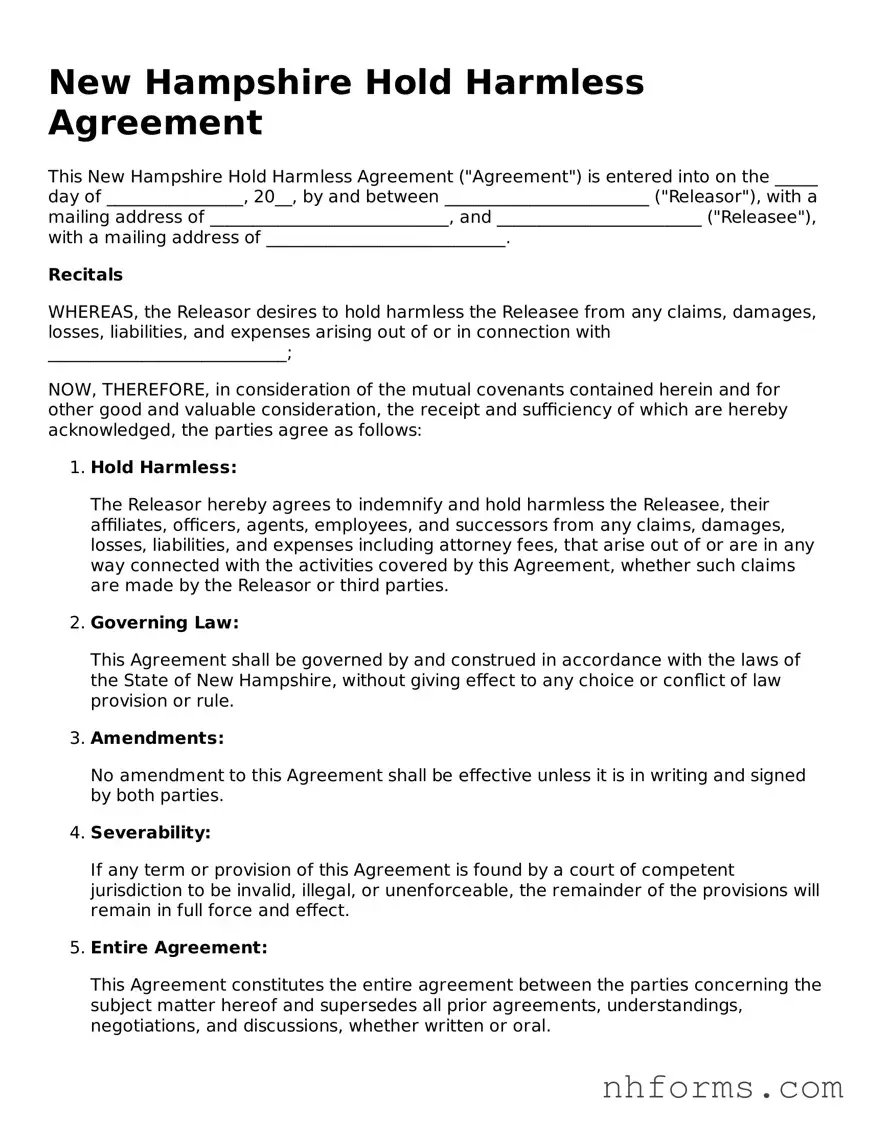New Hampshire Hold Harmless Agreement
This New Hampshire Hold Harmless Agreement ("Agreement") is entered into on the _____ day of ________________, 20__, by and between ________________________ ("Releasor"), with a mailing address of ____________________________, and ________________________ ("Releasee"), with a mailing address of ____________________________.
Recitals
WHEREAS, the Releasor desires to hold harmless the Releasee from any claims, damages, losses, liabilities, and expenses arising out of or in connection with ____________________________;
NOW, THEREFORE, in consideration of the mutual covenants contained herein and for other good and valuable consideration, the receipt and sufficiency of which are hereby acknowledged, the parties agree as follows:
- Hold Harmless:
The Releasor hereby agrees to indemnify and hold harmless the Releasee, their affiliates, officers, agents, employees, and successors from any claims, damages, losses, liabilities, and expenses including attorney fees, that arise out of or are in any way connected with the activities covered by this Agreement, whether such claims are made by the Releasor or third parties.
- Governing Law:
This Agreement shall be governed by and construed in accordance with the laws of the State of New Hampshire, without giving effect to any choice or conflict of law provision or rule.
- Amendments:
No amendment to this Agreement shall be effective unless it is in writing and signed by both parties.
- Severability:
If any term or provision of this Agreement is found by a court of competent jurisdiction to be invalid, illegal, or unenforceable, the remainder of the provisions will remain in full force and effect.
- Entire Agreement:
This Agreement constitutes the entire agreement between the parties concerning the subject matter hereof and supersedes all prior agreements, understandings, negotiations, and discussions, whether written or oral.
IN WITNESS WHEREOF, the parties have executed this Agreement as of the date first above written.
Releasor: ________________________
Date: ________________________
Releasee: ________________________
Date: ________________________
